On-Demand Outsourcing BPO Services for Healthcare Providers With 24/7 Coverage!
Save up to 70% on staffing costs!
Browse Specialty Staffing ServicesNOVEL DRUG DELIVERY SYSTEM

Author: Tamhane Rushikesh Laxman
Bramhane Poonam Rajendra
Bichkule Laxman Bandu
ABSTRACT
Novel drug delivery system refers to approaches formulation technology and system for transporting a pharmaceutical compound in the body as a needed to safety achieve desired therapeutic effect. It is a system for drug other than conventional drug delivery system. It is a combination of advanced technique and new dosage form which are far better than conventional drug delivery system. It improves therapy by increasing the duration of action and reducing side effect increase patient compliance through decrease dosing frequency and convenient route of administration. Achieve targeting of drug to specific site to reduce unwanted side effects and obtain maximum efficiency, this lead to reduce in dose and thus reduction in side effects of drugs. There are various challenges related to the novel drug delivery system which are the location of drug targeting changes drug by activity and kinetics. Every patient has different metabolism, patient or the drug may respond differently efficiency is sometimes hard to define. Clinical trials are expensive and difficult to conduct.
KEYWORD: – Conventional, Efficiency, Metabolism, Clinical Trials
INTRODUCTION
The method by which a drug is delivered can have a significant effect on its efficacy. Some drugs have an optimum concentration range within which maximum benefit is derived, and concentrations above or below this range can be toxic or produce no therapeutic benefit at all. On the other hand, the very slow progress in the efficacy of the treatment of severe diseases, has suggested a growing need for a multidisciplinary approach to the delivery of therapeutics to targets in tissues. From this, new ideas on controlling the pharmacokinetics, pharmacodynamics, non-specific toxicity, immunogenicity, biorecognition, and efficacy of drugs were generated. These new strategies, often called drug delivery systems (DDS), which are based on interdisciplinary approaches that combine polymer science, pharmaceutics, bioconjugate chemistry, and molecular biology. To minimize drug degradation and loss, to prevent harmful side-effects and to increase drug bioavailability and the fraction of the drug accumulated in the required zone, various drug delivery and drug targeting systems are currently under development. Controlled and Novel Drug Delivery which was only a dream or at best a possibility is now a reality. During the last decade and half pharmaceutical and other scientists have carried out extensive and intensive investigations in this field of drug research.1
NOVEL DRUG DELIVERY APPROCHES
Various drug delivery and drug targeting systems are currently under development to minimize drug degradation and loss, to prevent harmful side-effects and to increase drug bioavailability and the fraction of the drug accumulated in the required zone. Among drug carriers one can name soluble polymers, microparticles made of insoluble or biodegradable natural and synthetic polymers, microcapsules, cells, cell ghosts, lipoproteins, liposomes and micelles. The carriers can be made slowly degradable, stimuli-reactive (e.g., pH- or temperature-sensitive) and even targeted (e.g., by conjugating them with specific antibodies against certain characteristic components of the area of interest). Targeting is the ability to direct the drug-loaded system to the site of interest. Two major mechanisms can be distinguished for addressing the desired sites for drug release: (i) passive and (ii) active targeting. An example of passive targeting is the preferential accumulation of chemotherapeutic agents in solid tumours as a result of the enhanced vascular permeability of tumour tissues compared with healthy tissue. A strategy that could allow active targeting involves the surface functionalization of drug carriers with ligands that are selectively recognized by receptors on the surface of the cells of interest. Since ligand-receptor interactions can be highly selective, this could allow a more precise targeting of the site of interest.
Controlled drug release and subsequent biodegradation are important for developing successful formulations. Potential release mechanisms involve: (i) desorption of surface-bound / adsorbed drugs; (ii) diffusion through the carrier matrix; (iii) diffusion (in the case of nano capsules) through the carrier wall; (iv) carrier matrix erosion and (v) a combined erosion / diffusion process. The mode of delivery can be the difference between a drug’s success and failure, as the choice of a drug is often influenced by the way the medicine is administered.2 Sustained (or continuous) release of a drug involves polymers that release the drug at a controlled rate due to diffusion out of the polymer or by degradation of the polymer over time. Pulsatile release is often the preferred method of drug delivery, as it closely mimics the way by which the body naturally produces hormones such as insulin. It is achieved by using drug-carrying polymers that respond to specific stimuli (e.g., exposure to light, changes in pH or temperature).3 For over 20 years, researchers have appreciated the potential benefits of nanotechnology in providing vast improvements in drug delivery and drug targeting. Improving delivery techniques that minimize toxicity and improve efficacy offers great potential benefits to patients, and opens up new markets for pharmaceutical and drug delivery companies. Other approaches to drug delivery are focused on crossing particular physical barriers, such as the blood–brain barrier, in order to better target the drug and improve its effectiveness; or on finding alternative and acceptable routes for the delivery of protein drugs other than via the gastrointestinal tract, where degradation can occur.4 Presently novel drug delivery systems have been widely utilized only for allopathic drugs, but they have their own limitations hence, turning to safe, effective and time-tested Ayurvedic herbal drug formulation would be a preferable option.
TYPES OF NOVEL DRUG DELIVERY SYSTEM:
- Controlled Drug Delivery System
- Rate programmed Drug Delivery System
- Dissolution Controlled Drug Delivery System
- Diffusion Controlled Drug Delivery System
- Erosion Controlled Drug Delivery System’
- Activated Modulated Drug Delivery System
- Microencapsulation
- Microsphere
- Microcapsule
- Mucosal Drug Delivery System
- Implantable Drug Delivery System
- Osmotic Pump Drug Delivery
- Drugs Technology
- AZLET Osmotic Pumps
- Rose and Nelson
- Higuchi-Leeper Pump
- Higuchi-Theeuwees Pump
- Mini Osmotic Pump
- Elementary Osmotic Pump
- Osmotic Pump with Non-Expanding Second Chamber
- Multi Particulate Delayed Release Osmotic System
- Osmotic Pump for insoluble drugs
- Monolithic osmotic system
- Colon targeting osmotic system
- Sandwiched osmotic tablets
- Liquid Oral Osmotic Tablet
- Osmotic Matrix Tablet
- Transdermal Drug Delivery System
- Gastroretentive drug delivery system
- Nasopulmonary Drug Delivery System
- Intrauterine Drug Delivery System
1. Controlled drug delivery system
Controlled drug delivery system maintains suitable and desired drug release over and extended time period. Oral administration of drug has been the most common and preferred route for delivery of most therapeutic agents.5The role of drug delivery system today is to take a therapeutically effective molecule with sub optimal physiochemical or physiological properties and developed optimized product that will still be therapeutically effective added benefits.6
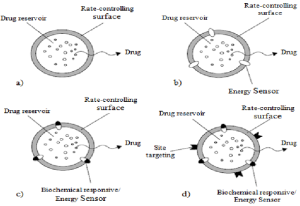
Fig.7 Controlled Drug Delivery System
- Rate–programmed drug delivery system
In this drug delivery system, the drug is release pre-planned with particular flow rate profile for medicine. The rate-programmed delivery system controls the molecular diffusion of the drug molecules in or across the barrier with in delivery system.5
- Dissolution-drug delivery system
In this delivery system, the controlled-release characteristics are imparted to the drug dosage form by either of the two rate-limiting phenomena:
1) Slow Dissolution Rate of the Drug: In this system, the drug present may be either of the two types:
- i) Drug having a slow dissolution rate, e.g., griseofulvin, digoxin, and nifedipine. Such drugs act as natural prolonged release products.
- ii) Drug that transforms into a slow dissolving form when in contact with GI fluids, e.g., ferrous sulphate.
2) Slow Dissolution Rate of the Reservoir Membrane or Matrix: In this system, the drug present may have high aqueous solubility and dissolution rate, e.g., pentoxifylline and metformin. The major challenge in designing such systems is controlling the drug dissolution rate by employing any one or by combining the following two techniques:
- i) Embedment in Slowly Dissolving, Degrading or Erodible Matrix: The matrix used in this approach may have low porosity or poor wettability.
- ii) Encapsulation or Coating with Slow-Dissolving, Degrading or Erodible Substances: This approach involves controlling the rate of dissolution, fluid penetration and/or wettability of the reservoir system.5
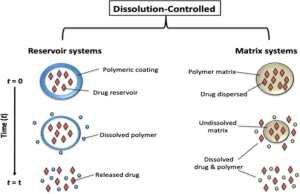
Fig.8 Dissolution Controlled Drug Delivery System
- Diffusion control drug delivery system
In this drug delivery system, the rate-controlling step is the diffusion of dissolved drug molecule through the rate-controlling element (insoluble, non-erodible, and non-degradable), and not the drug dissolution rate or release-controlling element.5
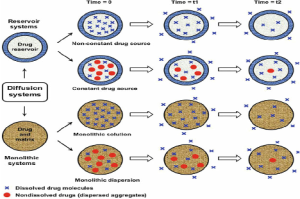
Fig.9 Diffusion Controlled Drug Delivery System
- Erosion control drug delivery system
Erosion is the physical disintegration of a polymer/wax matrix (or coating) as a result of degradation. It is characterised by material loss from the polymer in the physical state. Erosion is affected by some external stimuli, thus erosion-controlled drug delivery systems.5
- Activated modulated drug delivery system
In this drug delivery system, the drug release is controlled or activated by some physical, and biological process or by any supplied external energy source. Drug release from this delivery system is also controlled by energy input or any applied process. This activation process can be classified into the following categories:
i) Activation by physical processes,
ii) Activation by chemical processes, and
iii) Activation by biological processes.
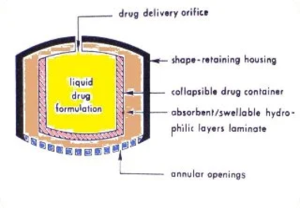
Fig 10 Activated Modulatd Drug Delivery System
2. Microencapsulation
The process in which solid, liquid or even gases are enclosed within microscopic particle by forming thin coatings of wall materials is terms microencapsulation.
Microencapsulation is process in which tiny particle or droplets are surrounded by a coating to give small capsule, of many useful properties .5
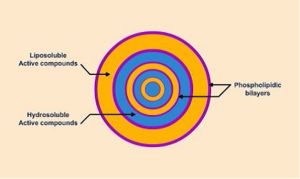
Fig11 Microencapsulation
- Microsphere
Microsphere are small, spherical, free-flowing particle, having diameter of 1000micrometer. They consist of biodegradable proteins or synthetic polymer. Microsphere are two types, i.e., microcapsule and micromatrices.5
- Microcapsules
Microcapsule are small sphere having uniform wall surrounding them. The diameter of microcapsule usually ranges between a few micrometres to a few metres. It should be having the ability to incorporate drug in high concentrations.5
3. Mucosal drug delivery system
In order to produce a systemic pharmacological effect, a drug can be administered through different routes. A drug is most commonly administered through oral route in which when the drug is swallowed it reaches the systemic circulation through small intestine membrane. Thus, drug administration via oral route is the most significant for producing systemic effect.5
Ideal Properties/Characteristics of Mucosal Drug Delivery System
- It should adhere to the attachment site for a few hours.
- It should release the drug in a controlled manner.
- It should release the drug towards the mucosa in a unidirectional way.
- It should facilitate the rate and extent of drug absorption.
- It should not cause any irritation or inconvenience to the patient.
- It should not interfere with normal functions, such as talking drinking, etc.6
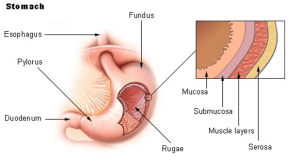
Fig12 Mucosal Drug Delivery System
4. Implantable drug delivery system
Implantable drug delivery systems are designed to be placed under the skin and release drugs into the blood circulation without repetitive insertion of needles. Therefore, IDDS is defined as “a sterile drug delivery device for subcutaneous implantation having the ability to deliver drugs at a controlled rate over a
prolonged time period, comprising a rod-shaped polymeric inner matrix with an elongated body and two ends”.5
Ideal Properties of an Implantable Drug Delivery System environmentally stable.
- It should be
- It should be biocompatible.
- It should be easy to manufacture and sterilise.
- It should enable rate-controlled drug release.
- It should improve patient compliance by reducing the drug dosing frequency throughout the treatment period.
- It should be relatively inexpensive.
- It should have a good mechanical strength.
- It should be free from surgical procedure.5
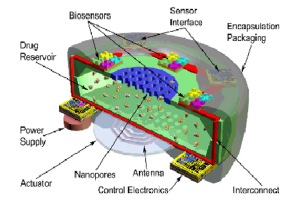
Fig13 Implantable Drug Delivery System
5. Osmotic drug delivery system
Osmotic pump-controlled release preparation is one of the most promising and effective dosage forms as it is independent of all the physiological and physiochemical factors. This system also optimises the process and formulation parameters, A significant development made in the osmotic delivery devices is their capability to deliver drugs with moderate and extreme solubility. These devices also deliver drugs as liquids to enhance permeability and to deliver insoluble drugs that can dispense sub-saturated solutions of drugs. Osmotic pump drug delivery technology can be used to deliver high drug doses meeting high drug loading requirement.5,6
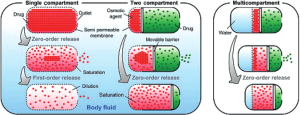
Fig14 Osmotically Acitvated Drug Delivery System
6. Transdermal drug delivery system (TDDS)
Transdermal Drug Delivery System (TDDS) involves the topically administered medications in self-contained, discrete dosage forms of patches, which on application to the skin deliver the drug into the bloodstream through the skin portal at a pre-determined and controlled rate over a prolonged time period to increase the therapeutic efficacy and reduce the side effect of drug.5,6
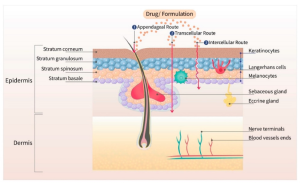
Fig15 Transdermal Drug Delivery System
7. Gastro-retentive drug delivery system
Gastroprotective drug delivery is a newly discovered drug delivery system. Main approach of this delivery is to prolong the drug’s gastric residence time, thus targeting site-specific drug release in the upper GIT for local or systemic effects.
- Approaches for GRDDS
Different approaches have been pursued to increase the retention of oral dosage forms in the stomach. Some are formulated as single component whereas others are formulated as multi component dosage forms. GRDDS can be broadly categorized into floating and non-floating system.5
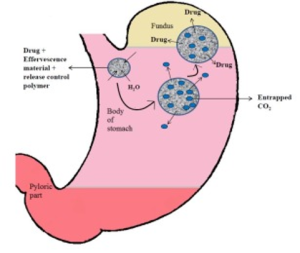
Fig16 Approach For Gastroretentive Drug Delivery System
8. Nasopulmonary drug delivery system
Nasal drug delivery is in practice since thousands of years. Drugs that are potent (active in low doses) and show no minimal oral bioavailability (proteins and peptides) are successfully delivered by the nasal route. Drug degradation that is observed in the gastrointestinal tract is absent. Hepatic first pass metabolism is avoided. Rapid drug absorption and quick onset of action can be achieved. The bioavailability of larger drug molecules can be improved by means of absorption enhancer or other approach. The nasal bioavailability for smaller drug molecules is good. Drugs that are orally not absorbed can be delivered to the systemic circulation by nasal drug delivery.5,6
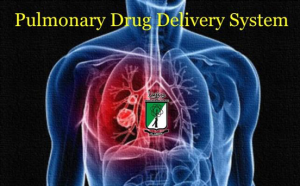
Fig17 Pulmonary Drug Delivery System
9. Intrauterine drug delivery system
Intrauterine Device (IUD) is a small object which is placed in the uterus through the cervix route to avoid pregnancy. A small string attached to IUD hangs down into the upper part of the vagina. The IUD can be removed easily by pulling the strings gently using forceps. The effectiveness of IUD as birth control is considered to be 99.2-99.9%. IUD provides zero protection against STDs, including HIV/AIDS.5
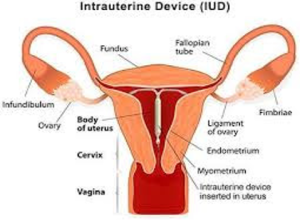
Fig18 Intrauterine Drug Delivery System
10. Targeted drug delivery system
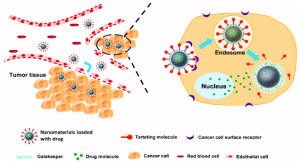
Fig19 Targeted Drug Delivery System
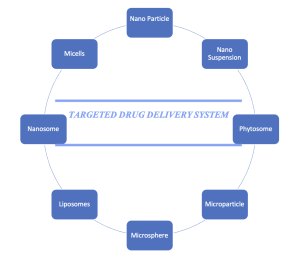
Fig20 Types Of Targeted Drug Delivery System
- Nanosome
Nano some are essentially non-ionic surfactant based multilamellar or unilamellar vesicles in which an aqueous solution solute is entirely enclosed by a membrane resulted from the organization of surfactant micro molecules as bilayers.20
Nanotechnology and nano delivery system use micro and nano solid particles or dispersion with a size in the range of 10 -1000 nm in which the drug material may be attached to a nano particle matrix, entrapped, dissolve or encapsulated to form nanosomes
- Liposome
The liposomes are a form of vesicles that consist of either of many, few or just one phospholipids bilayer. The polar character of the liposomal core enables polar drug molecule to be encapsulated.22 Liposomes is a minute spherical sac of phospholipid molecule enclose a water droplet, especially as formed artificially to carry drug into tissue.1
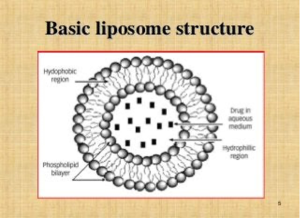
Fig.23 Structure Of Liposome
- Nanoparticle
A nanoparticle is a small particle that ranges between 1 to 100 nanometres in size. Undetectable by the human eye, nanoparticles can exhibit significantly different physical and chemical properties to their larger material counterparts, the particle size of at least half of the particles in the number size distribution must measure 100 nm or below. Most nanoparticles are made up of only a few hundred atoms. 24
- Microparticle
Microparticles are define as particulate dispersion or solid particle with the size in the range of 1-1000 micrometre the drug is dissolved, enterpeded, encapsulated or to a microparticle matrix.20
- Phytosomes
Phytosomes are the lipid compatible molecular complex. Phytosomes technology applied to poorly absorbable phytoconstituents. The bioavailability of phytoconstituents can be improved by the use of drug delivery system which have the capacity to cross the biological membrane. Phytosomes have better pharmacokinetic profile than conventional herbal extracts.25
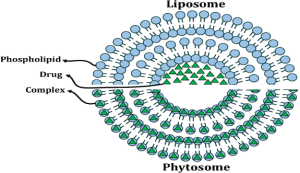
Fig26 Phytosome
- Nanosuspension
A pharmaceutical nanosuspension is define as a very finely dispersed solid drug particle in an aqueous or organic vehicle for either oral & topical use or parental and pulmonary administration.
The particle size distribution of the solid particle in nanosuspension is usually less than one micron with an average particle size for 200-600 nm. It can be used for controlled and targeted delivery of drug. 27
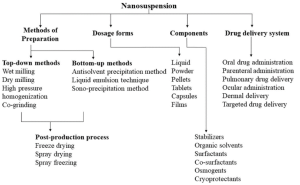
Table28 Classification Of Nanosuspension
- Micelles
Micelles are spherical amphiphilic structures that have a hydrophobic core and a hydrophilic shell. The hydrophilic shell makes the micelle water soluble that allows for intravenous delivery while the hydrophobic core carries a payload of drug for therapy. The nanoscale dimensions (diameter less than 50 nm) and the hydrophilic shell of polymeric micelles serve as protection from elimination by the reticulo-endothelial system, thereby increasing their circulation time and ability to deliver the drug to the target.29
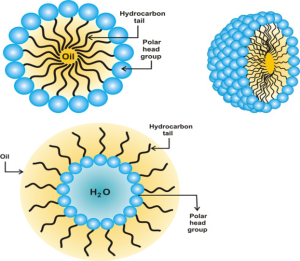
Fig30 Micelles
FACTOR AFFECTING NOVEL DRUG DELIVERY SYSTEM
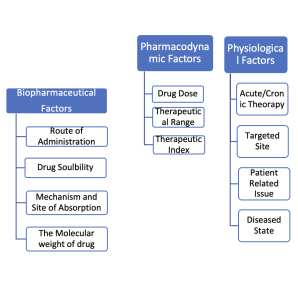
Table31 Factors Affecting Novel Drug Delivery System
ADVANTAGES & DISADVANTAGES OF NOVEL DRUG DELIVERY SYSTEM
| Advantages | Disadvantages |
| Drugs are protection from physical and chemical degradation | Difficult to maintain stability of dosage form. |
| It provides sustained delivery. | Drug loading can be slow. |
| NDDS improved tissue macrophage distribution. | Dosage dumping can occur. |
| Enhancement of pharmacological activity. | Require skill manpower of manufacturing storage and administration. |
| It improves bioavailability | The immune reaction can occur against intravenous administrated carrier system. |
| Improved Solubility of drug | Stability problem |
| Decrease toxicity/ side effects |
Table32,33 ADVANTAGES & DISADVANTAGES OF NOVEL DRUG DELIVERY SYSTEM
CONCLUSION
Novel drug Delivery system is a valuable gift of the modern-day pharmaceutical science which can cover up the limitations of convectional process of dosage form. All though the control drug delivery system has various advantages but there are some limitations in certain cases in present time nanoparticle, nano some, nanosuspension etc, technology to must one step forward pharmaceutical science. As per the increasing intensity of the disease there is strong need of a particular dosage system to reduce its toxic side effects. Although having some disadvantages there are more aspects in positive approach for which we should look up and work on negative side.
REFERENCES
- Chiranjit Barman,Dr.Gaurav Kumar Sharma,Dr.Kausal Kishore Chandrul Novel Drug Delivery System Overview
- Graham S, Neil B. Controlled drug delivery systems. Chem Ind. 1990; 6:25–38. [Google Scholar]
- Sungthongjeen S, Puttipipatkhachorn S, Paeratakul O, Dashevsky A, Bodmeier R. Development of pulsatile release tablets with swelling and rupturable layers. J Control Release. 2004;95:147–59. [PubMed] [Google Scholar]
- Sahoo SK, Labhasetwar V. Nanotech approaches to drug delivery and imaging. Drug Discov 2003;8:1112–20. [PubMed] [Google Scholar]
- Shailesh Tanhaji Prajapati, Dr.R.Manivannan Novel Drug Delivery System Thakur Publication PVT.LTD Lucknow
- Aijaz Sheikh, Dr.Subhash V. Deshmane ,Dr.MD. Rageeb Md. Usman Novel Drug Delivery System,S. Vikas and company
- Luta, Ionela & Maria, Gheorghe. (2012). Semi-empirical vs. mechanistical kinetic models used to design drug delivery systems. UPB Scientific Bulletin, Series B: Chemistry and Materials Science. 74. 99-112.
- J P GRIFFIN bsc, phd, MB BS, FRCP, frcpath, FFPM, P F D’ARCY OBE, bpharm, phd, dsc, dsc (Hon), frpharms, cchem, FRSC, FPSNI, in A Manual of Adverse Drug Interactions (Fifth Edition), 1997
- Huynh, Cong Truc & Lee, Dong-Sheng. (2014). Controlled Release. Encyclopedia of Polymeric Nanomaterials, 2014. 1-12. 10.1007/978-3-642-29648-2_314.
- https://www.google.com/url?sa=i&url=https%3A%2F%2Fwww.slideshare.net%2Fsadanandmr%2Fhydrodynamic-drug-gelivery-system&psig=AOvVaw0SNMnD5PZ8CMEWkfhiDWFg&ust=1666352029117000&source=images&cd=vfe&ved=0CA0QjRxqFwoTCOjJ9prb7voCFQAAAAAdAAAAABAW
- Keshari Roshan*, Rathore KS, Bharkatiya Meenakshi, MishraAmulBhupal Nobel’s Institute of Pharmaceutical Sciences,Udaipur, Rajasthan, India.
- https://www.google.com/url?sa=i&url=https%3A%2F%2Fpharmacampus.in%2Fnovel-drug-delivery-systems%2Fintroduction-mucosal-drug-delivery-system%2F&psig=AOvVaw25UztKT8wNTxbt7BeUSa8E&ust=1666352688702000&source=images&cd=vfe&ved=0CA0QjRxqFwoTCJCv-tXd7voCFQAAAAAdAAAAABAN
- A Comprehensive Study on Design Trends and Future Scope of Implantable Drug Delivery Systems Kritika Ramesh and Shagun Gupta and Suhaib Ahmed and Vipan Kakkar
- Vediappan, Vijayakumar & Subramanian, K.. (2016). Drug Carriers, Polymers as: Synthesis, Characterization, and In Vitro Evaluation. 10.1081/E-EBPP-120050597.
- https://www.google.com/url?sa=i&url=https%3A%2F%2Fwww.mdpi.com%2F1999-4923%2F13%2F7%2F960%2Fhtm&psig=AOvVaw0LII2HF_7PiPVsiL7ty2MC&ust=1666353174123000&source=images&cd=vfe&ved=0CA0QjRxqFwoTCKDV8Lvf7voCFQAAAAAdAAAAABAI
- Mandal, Uttam & Chatterjee, Bappaditya & Senjoti, Faria. (2016). Gastro-retentive drug delivery systems and their in vivo success: A recent update. Asian Journal of Pharmaceutical Sciences. 11. 575-584. 10.1016/j.ajps.2016.04.007.
- https://www.google.com/url?sa=i&url=https%3A%2F%2Fwww.authorstream.com%2FPresentation%2Fashanibasu-2062130-pulmonary%2F&psig=AOvVaw0P1YoA_vC7Pze0Ntc1TmoY&ust=1666353445506000&source=images&cd=vfe&ved=0CA0QjRxqFwoTCPiFvcrg7voCFQAAAAAdAAAAABAM
- https://www.google.com/url?sa=i&url=https%3A%2F%2Fjsmasipharmacy.blogspot.com%2F2020%2F10%2Fintra-uterine-drug-delivery-system-ndds.html&psig=AOvVaw0ULKK_qQEnrLHXEGvcwJXi&ust=1666353617890000&source=images&cd=vfe&ved=0CA0QjRxqFwoTCNiBxJjh7voCFQAAAAAdAAAAABAI
- Sargazi, Saman & Laraib, Ushna & Er, Simge & Rahdar, Abbas & Hassanisaadi, Mohadeseh & Zafar, Muhammad & Diez-Pascual, Ana & Bilal, Muhammad. (2022). Application of Green Gold Nanoparticles in Cancer Therapy and Diagnosis. Nanomaterials. 12. 1102. 10.3390/nano12071102.
- https://issuu.com/ijtsrd.com/docs/182_novel_drug_delivery_system_an_overview
- Rajeswary Hari, K. Dhandhayuthapani, Anant Narayan Bhatt, Sanjay Kumar Gupta,Chapter 9 – Nanosomes for drug delivery: Recent advances and future prospects,Editor(s): Krishnan Anand, Muthupandian Saravanan, Balakumar Chandrasekaran, Suvardhan Kanchi, Sarojini Jeeva Panchu,Quansheng Chen,Handbook on Nanobiomaterials for Therapeutics and Diagnostic Applications,Elsevier,2021,Pages 191-209
- R. Bhagvat and I. S. Vaidhya Novel Drug Delivery system IJPSR 2013 vol. 4, 970.982
- https://www.google.com/url?sa=i&url=https%3A%2F%2Fwww.slideshare.net%2FSunealSaini%2Fliposomes-47868772&psig=AOvVaw1N9wLC7XaDYe_V4hDoKWy7&ust=1665927878647000&source=images&cd=vfe&ved=0CA0QjRxqFwoTCKDqgoyv4voCFQAAAAAdAAAAABAN
- https://www.twi-global.com/technical-knowledge/faqs/what-are-nanoparticles
- Deepak S, Prashant U, Sukriti U. Phytosomes: An Advanced Drug Delivery System for Herbal Drug. Glob J Pharmaceu Sci. 2018; 6(1): 555679. DOI: 19080/GJPPS.2018.06.555679.
- Karimi, N., Ghanbarzadeh, B., Hamishehkar, H., Keivani, F., Pezeshki, A., & Gholian, M.M. (2015). Phytosome and Liposome: The Beneficial Encapsulation Systems in Drug Delivery and Food Application.
- https://www.sciencedirect.com/science/article/pii/B9780128210130000076
- https://www.google.com/url?sa=i&url=https%3A%2F%2Fwww.pharmaexcipients.com%2Fnanotechnology%2Fnanosuspensions-drug-delivery%2F&psig=AOvVaw1n3swJ77Dbqrsp1ZU4n2So&ust=1665930738770000&source=images&cd=vfe&ved=0CA0QjRxqFwoTCNDJ_OC54voCFQAAAAAdAAAAABAI
- https://www.sciencedirect.com/topics/materialsscience/micelle#:~:text=Micelles%20are%20nanosized%20colloidal%20dispersions,shell%20stabilizes%20the%20hydrophobic%20core.
- Ignác Capek,Preparation of polymer-based nanomaterials,Editor(s): Ignác Capek,Nanocomposite Structures and Dispersions (Second Edition),Elsevier,2019,Pages 175-265,ISBN 9780444637482,
- https://acikders.ankara.edu.tr/pluginfile.php/143040/mod_resource/content/0/14_Week.pdf
- https://www.pharmaguideline.com/2021/06/novel-drug-delivery-system.html?m=1
- https://www.slideshare.net/SaiLakshmi110/novel-drug-delivery-system-238955109
- Lachman/Lieberman’s, The theory and practice of Industrial Pharmacy by Leon Lachman, Herbert A Liberman, Joseph L. Kanig (3rd Edition)
- Novel Drug Delivery Systems D.K. Tripathi, Amit Alexander
 Book a Demo to Build Your Team Today!
Book a Demo to Build Your Team Today!
 Read Case Studies
Read Case Studies 


 Virtual Medical Assistants
Virtual Medical Assistants



